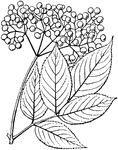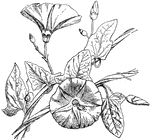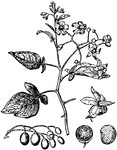336 illustrations of flowers and shrubs including: balm, balsam, barberry, bartonia, basil, bearberry, bedstraw, beech, begonia, bellflower, berberis, bindweed, birthwort, bitter cress, black pepper, blackberry, borage, broomrape, bryony, buckeye, buckthorn, buckwheat, bugloss, bur-reed, buttercup, and butterwort

Perfoliate Bellwort
Of the bellwort family (Uvularia), the perfoliate bellwort (Uvularia perfoliata).

Sessile Bellwort
The Sessile Bellwort (Uvularia sessilifolia) is a species of bellworts, here showing its sessile leaves.

Ficus Benjamina
Known as a weeping fig, commonly seen in stores as ficus. This tree is native to southern and southeastern…

Benzoin Aestivale
The common names of Benzoin aestivale are spice bush, Benjamin bush, wild allspice, and fever bush.…
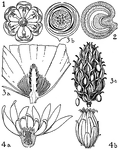
Berberidaceae, Menispermaceae, Mahnoliaceae, and Calycanthaceae Orders
Shown are the orders of berberidaceae, menispermaceae, magnoliaceae, and calycanthaceae. The illustrated…
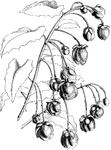
Berberidopsis Corallina
Berberidopsis corallina is a hardy, evergreen shrub. The flowers are crimson with a leafy base. This…
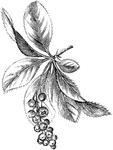
Berberis
An illustration of a berberis branch. Berberis (Bér-be-ris, barberry, pepperidge bush) a genus…

Berberis Flower
An illustration of the berberis flower. Berberis (Bér-be-ris, barberry, pepperidge bush) a genus…

Berberis Heteropoda
Berberis heteropoda grows between three and six feet tall. The branches are stout and spreading. The…

Berberis Nepalensis
The common name of berberis is barberry. The nepalensis variety has yellow flowers that grow together…

Berberis Regeliana
Berberis regeliana is an upright shrub, growing up to six feet tall. The branches are gray and grooved.…

Habit and Flowering Twig of Berberis Stenophylla
Berberis stenophylla is the naked-leaved variety of barberry. This variety is said to be a hybrid between…
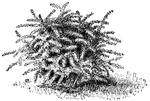
Berberis Thunbergii
Berberis thunbergii is a dense, low shrub that grows two to five feet tall. The branches are brown,…

Fruiting Twig of Berberis Thunbergii
The fruit of Berberis thunbergii is nearly globe shaped and bright red. The branches spread, are deeply…
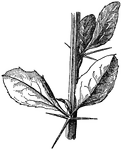
Berberis Vulgaris
The common name of Berberis vulgaris is common barberry. The shrub grows between four and eight feet…
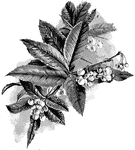
Berberis Wallichiana
The flowers of berberis wallichiana grow on drooping stalks with six to eight flowers in each cluster.…

Fruit of Berberis
An illustration of the berberis fruit. Berberis (Bér-be-ris, barberry, pepperidge bush) a genus…

Beschorneria Bracteata
Beschorneria bracteata has yellowish-red flowers. The leaves form a dense rosette. This plant is native…

Bessera Elegans
Bessera is commonly known as Mexican coral drops. The elegans variety has flowers that are borne through…
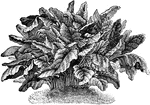
Beta Hortensis Metallica, or Victoria Beet
Victoria Beet is the common name of beta hortensis metallica. Used mostly for ornamental purposes, the…
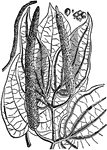
Betel Vine
"Betel vine. Betel, a species of pepper, a creeping or climbing plant, native of the East Indies." -Vaughan,…

Leaves and Catkin of Betula Alba
The common names of betula alba are silver, white, or common birch. The flower is whitish and blooms…
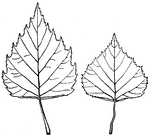
Leaves of Betula Pendula
Betula pendula have a rhomboid like oval shape. The leaves are three quarters of an inch to two and…
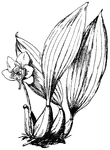
Bifrenaria Harrisoniae
Bifrenaria harrisoniae has pseudobulbs that are two and a half inches long and one leaved. The flowers…

Branch of Bigleaf Magnolia
Also known as Magnolia macrophylla. The branch of a Bigleaf Magnolia tree, native to the southeastern…
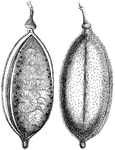
Bignonia Fruit
"1. capsule of Bignonia echinata (Pithecolobium Aubletii); 2. the same with the valves removed and the…

Branch and Flowers of Bignonia Magnifica
The flowers of bignonia magnifica range in color from a delicate mauve to a rich purplish-crimson. The…

Cross Section of Stem of Bignonia
Illustrated is the cross section of a stem of a tropical climber of the bignonia family. The stem is…
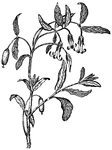
Billardiera Scandens
The flowers of Billardiera scandens are greenish yellow, violet, or purple. The leaves are one to two…
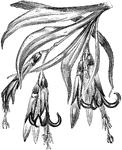
Flowers of Billbergia Ntans
Billbergia nutans flowers have reddish sepals and yellowish-green petals, both with a blue margin. The…

Billbergia Vexillaria
The flowers of Billbergia vexillaria are purple. The lower bracts are red. The flower spike is erect…
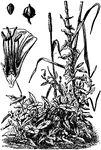
Bindweed
Convolvulus is a genus of about 250 species of flowering plants in the bindweed family Convolvulaceae,…

Bindweed and Dodder
Of the Convolvulus family (Convolvulaceae): top, hedge bindweed (Convolvulus sepium); bottom, common…
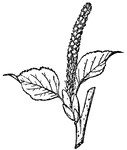
Catkin of Canoe Birch
Canoe and paper birch are the common names of Betula papyrifera. Illustrated is the catkin of canoe…
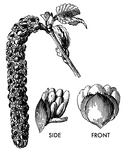
Flowers of Canoe Birch
Illustrated are the staminate catkin and flower of Betula papyrifera. The common names are paper and…

Virginia Snakeroot
Of the birthwort family (Aristolochiaceae), the Virginia snakeroot or Aristolochia serpentaria and the…
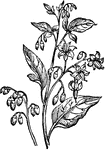
Bittersweet
The Bittersweet (Solanum dulcamara) is a perennial vine in the Solanaceae family of nightshades.

Flowering Branch of Bixa Orellana
Bixa, also known as Annatto or Arnatto, is an evergreen tree. The orellana variety has pale, peach colored…

Black Pepper
"A genus of order Piperaceae. The Piper nigrum, which furnishes the black pepper of commerse, is a native…
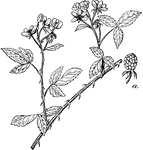
Blackberry
A shrub producing many black, bulbous fruits. Commonly used in desserts, jams, jellies, and wine.
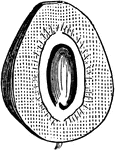
Blackberry
One of its component simple fruits (drupe) in section, showing the pulp, stone, and contained seed.
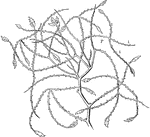
Australian Blackberry Leaves
"Xerophytic leaves of the Australian blackberry. l, leaflets reduced in many cases to bare midrobs,…
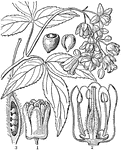
Japanese Bladdernut
"Staphylea Bumalda. 1. a flower; 2. a perpendicular section of it; 3. a section of its ovary." -Lindley,…
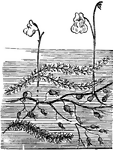
Bladderwort
This illustration shows a Bladderwort, some of whose leaves have converted into traps for insects.


